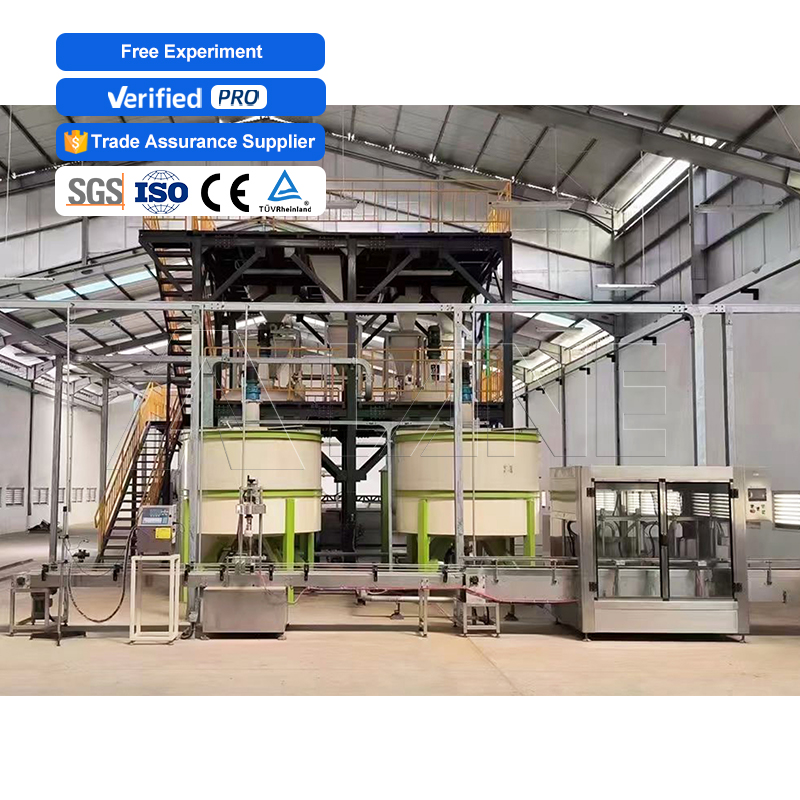Water soluble fertilizer, as an efficient and convenient form of fertilizer, plays a crucial role in modern agricultural production. It can quickly dissolve in water and reach the roots of plants through irrigation systems, thus quickly supplementing the nutrients needed by plants. However, there are some common issues in the production process of water-soluble fertilizers that may affect the quality and application effectiveness of the product.

1. Crystallization problem
Crystallization formation: In a liquid phase environment, nutrient elements are in a supersaturated state, and changes in external conditions can easily lead to the crystallization of water-soluble fertilizers.
The influencing factors of crystallization: Crystals have the difference between rapid growth and slow growth, so it takes six months to one year to observe the formula of new products.
Solution: Combine phase diagrams and the interactions between ions of various substances to avoid the formation of poorly soluble substances or substances that are greatly affected by temperature.
2. Hierarchical problem
Reason for stratification: The uneven settling speed caused by the uneven particle size of suspended fertilizers after being placed for a period of time leads to stratification.
Solution: Make the particle diameter as small as possible and use a suitable suspension agent.
3. Increased viscosity
The reason for the increase in viscosity: At high salt concentrations, when the temperature decreases, the viscosity of suspended fertilizers increases and the flowability significantly decreases.
Solution: Adjust the pH of the fertilizer (alkaline is beneficial for reducing bloating), reduce the amount of urea used, use breathable bottle caps, use breathable PE materials, etc.
4. Swelling problem
Gas production: Two or more materials react to release gas.
Solution: Increase the compressive strength of the bottle, adjust the pH of the fertilizer (alkaline is beneficial for reducing bloating), reduce the amount of urea used, use breathable bottle caps, use breathable PE materials, etc.
5. Moisture absorption and agglomeration
Reasons for clumping: Factors such as moisture absorption, moisture content, stacking weight of raw materials, relative humidity of production environment, and water absorption of packaging materials can all cause fertilizer to absorb moisture and clump.
Solution: Add some dry substances with good solubility and no side effects to reduce the moisture content of fertilizers; There is a limit requirement for insoluble substances in water, and anti caking agents usually added to conventional compound fertilizers cannot be used for water-soluble fertilizers.
6. Corrosion of packaging materials
Reason for corrosion: The acidity and alkalinity of some fertilizers can easily cause corrosion to packaging materials.
Solution: A test must be conducted before packaging to ensure that the packaging materials are qualified and durable.
7. Raw material selection
The importance of raw materials: The selection of raw materials is a key factor in determining the water solubility, cost, and nutritional adaptability of products.
Solution: Design formulas based on the nutritional needs of crop growth, carefully select raw materials and production processes, and ensure that the water solubility of the product is much higher than that of ordinary fertilizers, generally reaching over 98%.
8. Product stability issues
Stability influencing factors: Temperature, light, pH value, etc. may all affect the stability of the product.
Stabilization treatment: Improve product stability by adding stabilizers, adjusting pH values, and using shading packaging.
9. Environmental adaptability issues
The challenge of environmental adaptation: Differences in soil and water quality in different regions may affect the effectiveness of water-soluble fertilizers.
Regional formula design: Develop suitable formulas based on the environmental conditions of different regions to meet the needs of local crops.

Overall, the production of water-soluble fertilizers is a complex process involving multiple raw materials and multiple steps. During the production process, problems such as crystallization, delamination, increased viscosity, bloating, moisture absorption and agglomeration, and corrosion of packaging materials may occur. Through scientific and rational selection of raw materials, formulation design, process optimization, and storage and transportation management, these problems can be effectively solved to ensure the quality of water-soluble fertilizer products.
If you have any further inquiries about the water-soluble fertilizers, please feel free to consult our company at any time.